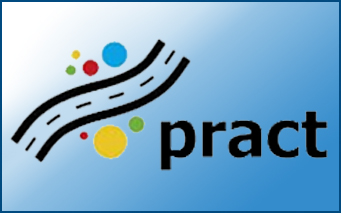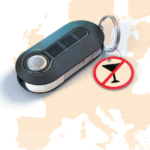

The International Road Traffic and Accident Group (IRTAD) of the International Transport Forum (ITF/OECD) published recently a new Report, with the active contribution of NTUA, which examines how improving insights regarding the real number of alcohol-related road casualties worldwide can help to save lives. A total of 45 countries were surveyed with the help of an online questionnaire, and insightful statistics are presented in this Report. ![]()
![]()
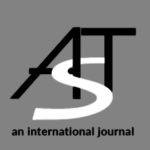
A paper titled “Simulation based safety margin assessment on speed variation between tangent to curved road alignment” authored by Eleonora Papadimitriou, Stergios Mavromatis, Dimosthenis Pavlou and George Yannis is now published in Advances in Transportation Studies. This paper investigates the safety margins of drivers along tangent to curved road sections. A vehicle dynamics model is presented, allowing to assess the vehicle speed variation at impending skid conditions from tangent to curve on the basis of several parameters. The results suggest that drivers’ safety margins towards the examined curve are considerable, with the majority of the drivers using less than 55% of the available vehicle horse power. Higher initial speed was positively correlated with driving efficiency i.e. lower safety margins. On the contrary, a higher safety margin was associated with earlier deceleration before the curve. ![]()

The Albania Road Safety Performance Review Capacity Building Workshop was held with great success in Durres, Albania on 6-7 February 2018, in the framework of the UNECE‘s project “Road Safety Management Capacity Building” project ![]()
![]() . The workshop objective was to provide information, best practice and training in identified priority areas for national government officials and other road safety stakeholders from the NGOs and private sector.
. The workshop objective was to provide information, best practice and training in identified priority areas for national government officials and other road safety stakeholders from the NGOs and private sector. ![]()

The 2nd Newsletter of the African-European Dialogue Platform on Road Safety (SaferAfrica) has been recently issued with the active contribution of NTUA. This Newsletter is the official, semi-annual newsletter of the SaferAfrica Project funded within the EC Horizon 2020 Programme, aiming to create favourable conditions and opportunities for the effective implementation of actions for road safety and traffic management in African countries. This second issue includes: a) Road Safety Data Capturing and Management Challenges in Africa, b) Stories from Cameroon and South Africa, c) Safety Cube Decision Support System, d) Road Safety in new H2020 Work Programme and more. ![]()

SWOV is organizing the 6th HUMANIST Conference which will be host on 13-14 June 2018 in the Hague, The Netherlands. The theme of the conference is “Towards Vehicle Automation – Human Factors Challenges“. The scope of the conference covers a wide range of topics on Human Factors in Transport. The 2018 conference has a special focus on the Human Factors issues related to transition towards self-driving vehicles. Topics for this year’s symposium include, but are not limited to: Automated Driving and ADAS, Human Machine Interaction, Transition of Control, Driver state, Driver workload and task demand, Interaction of (partly) automated vehicles with vulnerable road users, Human factors in mixed traffic conditions, Older drivers / novice drivers, Naturalistic Driving studies, and Eco-driving. ![]()

Road safety is a major issue in Latin America and substantial actions are needed to reduce the number of road deaths and injuries. The International Transport Forum (ITF) released a report which describes and benchmarks road safety management and performance in ten Latin American countries: Argentina, Brazil, Chile, Colombia, Costa Rica, Cuba, Ecuador, Mexico, Paraguay and Uruguay. The comparisons in this study allow identifying similarities and differences between countries’ road safety performance. It will be useful to policy makers in assessing weaknesses and strengths, and designing effective road safety policies that make use of the experiences in other countries. ![]()
![]()
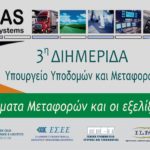
The 3rd Conference on Intelligent Transportation Systems and related developments in Greece, organised by ITS Hellas took place with great success in Athens, on 23-24 January 2018. The aim of the conference was to discuss the latest developments and the wide application of Intelligent Transport Systems (ITS) in Greece, as a mean of economic development and prosperity and to ensure the effectiveness, efficiency and transport safety for the benefit of users and the environment. ![]()
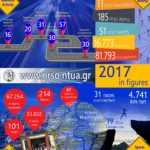
The infographic of the 2017 NTUA Road Safety Observatory (www.nrso.ntua.gr) highlights one more very intensive year, striving with highly scientific expertise to improve road safety in Greece, in Europe and worldwide. The nrso people with excellent dedication, efficiency and expertise were active in 16 innovative research projects, succeeded to publish 51 scientific papers (20 in peer reviewed journals), had more than 16.500 nrso users, handled more than 100.000 emails and run more than 4.700 km! ![]()
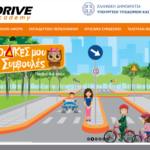
e-Drive Academy is an Innovative Educational e-platform for Safe, Smart, Ecological Transport and Driving, developed and operated by the General Directorate of Road Safety of the Hellenic Ministry of Infrastructure, Transport and Networks. e-Drive Academy provides all necessary educational services in order to develop an improved road safety culture and safe travelling for all road users, regardless of age, education or economic level. It aims to raise awareness of road users to adapt their behaviour to safer everyday travelling, with particular emphasis on consolidation of road safety issues and traffic safety education of children and preparing them as the responsible drivers of tomorrow. e-Drive Academy introduces for the first time the systematic teaching of Traffic Behaviour and Road Safety in Greek Primary Schools which start within 2018. ![]()
![]()
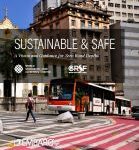
World Resources Institute (WRI) Ross Center for Sustainable Cities and the Global Road Safety Facility of the World Bank in their publication titled “Sustainable and Safe: A Vision and Guidance for Zero Road Deaths” indicated that the most effective way to prevent traffic deaths is a systemic approach that shifts responsibility away from the drivers and pedestrians using roads to the city planners and officials designing them. ![]()
![]()
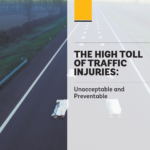
The World Bank launched a publication titled: “The high toll of traffic injuries – Unacceptable and Preventable“, in which a comprehensive methodology is proposed in order to quantify both the income growth and social welfare benefits that safer roads could bring to developing countries. The analysis is based on data collected from 135 countries over 24 years, and demonstrated that reducing the number of road traffic injuries in developing countries not only increases income growth, but also generates substantial welfare benefits to societies. ![]()
![]()

VESAFE, the one stop shop for vehicle safety is an e-guide commissioned by the European Commission (DG Employment, Social Affairs and Inclusion) and it has been developed by a consortium made up of TNO, TOI, Kooperationstelle, Fesvial, vhp, and Learnways. Work-related vehicle risks account for 29% of all fatal occupational accidents. However, good practices to avoid and reduce these risks have already been implemented within the member states in the EU. Sharing them can help employers and workers to improve vehicle-related safety. With this interactive e-guide many good practices are provided as well as an overview of relevant regulations and information about safe driving for work, workplace transport safety, and working on or near a road. ![]()
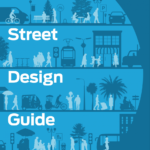
Global Designing Cities Initiative together with the National Association of City Transportation Officials (NACTO) launched “The Global Street Design Guide“, as a very timely resource that will set a global baseline for designing streets and public spaces while redefining the role of streets in a rapidly urbanizing world. The Guide broadens how to measure the success of urban streets to include access, safety and mobility for all users, environmental quality, economic benefit, public health and overall quality of life. ![]()
![]()
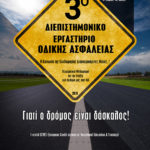
The Hellenic Association of Driving Instructors with the support of the Hellenic Institute of Transportation Engineers, the Hellenic Society of Automotive Engineers, organized the 3rd Interdisciplinary Conference “Traffic Society and Road Safety: Crossing Glances”, which took place with great success in Athens on 7-8 January 2018. This Interdisciplinary Road Safety Conference brought together all road safety experts, stakeholders and Authorities in Greece in order to discuss current road accident problems and solutions in Greece with emphasis on road safety training and education. ![]()

The Transportation Research Board (TRB) 97th Annual Meeting was held with great success in Washington, D.C., on 7-11 January 2018. The meeting program covered all transportation modes, with more than 5,000 presentations in nearly 800 sessions and workshops, addressing topics of interest to policy makers, administrators, practitioners, researchers, and representatives of government, industry, and academic institutions. A number of sessions and workshops focused on the spotlight theme for the 2018 meeting: Transportation: Moving the Economy of the Future. ![]()
NTUA presentations concerned:

 Mobile Sensing and Machine Learning for Identifying Driving Safety Profiles
Mobile Sensing and Machine Learning for Identifying Driving Safety Profiles

 Developing a Global Road Safety Model
Developing a Global Road Safety Model
 Comparative Evaluation of Driving Efficiency Using Smartphone Data
Comparative Evaluation of Driving Efficiency Using Smartphone Data
 The Value of Mini Mental State Examination (MMSE) and Montreal Cognitive Assessment (MoCA) in the Prediction of Fitness to Drive in Patients with Mild Cognitive Impairment (MCI) and Mild Alzheimer’s Disease (mAD)
The Value of Mini Mental State Examination (MMSE) and Montreal Cognitive Assessment (MoCA) in the Prediction of Fitness to Drive in Patients with Mild Cognitive Impairment (MCI) and Mild Alzheimer’s Disease (mAD)
 Cognitive Deficits and Driving Ability in Patients with Parkinson’s Disease
Cognitive Deficits and Driving Ability in Patients with Parkinson’s Disease
 Acceleration Impact Investigation for Control Road Geometry Parameters
Acceleration Impact Investigation for Control Road Geometry Parameters Establishment of the African Road Safety Observatory
Establishment of the African Road Safety Observatory SafetyCube – The European Road Safety Decision Support System
SafetyCube – The European Road Safety Decision Support System Comparative Analysis of Driving Efficiency Using Optimization Techniques for Large-Scale Smartphone Data
Comparative Analysis of Driving Efficiency Using Optimization Techniques for Large-Scale Smartphone Data

Road Safety Institute “Panos Mylonas”, the economic and investment magazine HRIMA and the Hellenic Association of Motor Vehicle Importers Representatives (AMVIR), organized Fondation Vinci Autoroutes – Auto Forum 2017 titled: “Technology for road safety”, which took place with great success on 2 November 2017 in Vouliagmeni, Athens. Fondation Vinci Autoroutes – Auto Forum 2017 highlighted all new advancements in the automobile industry and presented products and services that will circulate in the near future and will affect – one way or the other – road safety in our country. ![]()

At the end of another year full of surprises, non-stopping efforts, few disappointments and some great achievements like the new breakthrough Road Safety Decision Support Systems: SafetyCube and SafeFITS, we persist with creative hope and scientific rigor for even more safe road traffic everywhere and for all.
We are sending you all our very best wishes for very joyful Christmas holidays and a very happy and fruitful new year 2018, plenty of personal and professional achievements. ![]()

The European Commission’s Directorate General for Mobility and Transport (DG Move) published the Final Report of “The implementation of Directive 2006/126/EC on driving licences”, with the active contribution of NTUA. The third Directive on driving licences entered into force in January 2013 and provides harmonized rules aimed at enhancing drivers’ freedom to move, reducing the possibility of driving licence fraud and improving road safety in the EU. This Study explores the implementation of the third Directive on driving licences four years after implementation and assesses whether the introduced novelties contributed to achieving the objectives set by the Directive. ![]()
![]()

A paper titled “Accident Prediction Modelling: a literature review” authored by Tassos Dragomanovits, George Yannis, Alexandra Laiou, Francesca La Torre, Lorenzo Domenichini, Thomas Richter, Stephan Ruhl, Daniel Graham, and Niovi Karathodorou, is now published in the themed issue on transport safety and assessment of the Proceedings of ICE – Transport. This paper presents a comprehensive literature review on road traffic Accident Prediction Models (APMs) and Crash Modification Factors (CMFs). The focus is on motorways and higher ranked rural roads and the study was performed within the PRACT research project carried out for the European Road Authorities Organistion (CEDR). The review of CMFs focused on their background and development, the various methods for developing them and the key issues in their application. The review resulted in the development of an online APM and CMF Repository, with the aim of assisting the practical application of gathered experience on accident prediction. ![]()

The Road Safety Authority of Ireland organised a workshop on Measuring Risk Exposure on Irish Roads, which was held with great success in Dublin on 14 December 2017. The workshop’s main objective was to develop more effective means to measure risk exposure for road safety especially in the area of vehicle/kilometres travelled, and it was carried out within the framework of the Irish Government Road Safety Strategy 2013-2020. NTUA actively contributed with a presentation:

The 2017 Annual Polis Conference on “Transport innovation for sustainable cities and regions” took place with great success on 6 and 7 December 2017 in Brussels, organised by POLIS, the European Cities Network. The conference provided an opportunity for cities, metropolitan areas and regions to showcase their transport achievements to a large audience, and for the wider transport community to engage with representatives of local and regional authorities on innovative transport solutions. ![]()
Road Safety was one of the key areas of the Conference, as was also the subject of the special joint POLIS–ITF workshop on Safer City Streets. ![]() NTUA presentation concerned:
NTUA presentation concerned:
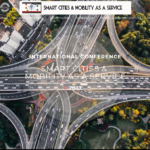
The University of Patras, Department of Civil Engineering, in cooperation with ITS Hellas and with the support of the Hellenic Institute of Transportation Engineers organized the “Smart Cities and Mobility as a Service” Conference which took place with great success in Patras, Greece during 7-8 December 2017. The aim of the Conference was to present the latest research and results related to Smart Cities and Mobility as a Service topics. ![]() All presentations are now available:
All presentations are now available: ![]() . NTUA actively contributed with 4 presentations:
. NTUA actively contributed with 4 presentations:

 Evaluating the use of ICT tools to the mobility management of University Campuses
Evaluating the use of ICT tools to the mobility management of University Campuses
 Review of Advanced Driver Assistance Systems
Review of Advanced Driver Assistance Systems 
 Effectiveness of intelligent speed adaptation, collision warning and alcolock systems on driving behaviour and safety
Effectiveness of intelligent speed adaptation, collision warning and alcolock systems on driving behaviour and safety 
 Latent model analysis for the investigation of driving behaviour based on driving simulator data
Latent model analysis for the investigation of driving behaviour based on driving simulator data

The National Road Safety Conference is staged annually in November and organised by Road Safety GB. The conference moves around the UK and in 2017 took place in Manchester on 14-15 November. ![]()
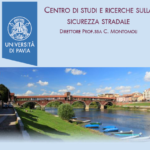
Universita di Pavia is implementing for 2018 a post bachelor programme in Management of road safety and reconstruction and analysis of road accident. The innovative course has the aim of training highly qualified professionals with a solid background in road safety and capable of operating in all the phases of investigations and analysis of road accidents. The programme is a full time international one-year program and designed for students from all over the world. The master’s course language is English and Italian. ![]()
![]()

A Diploma Thesis titled “The impact of nighttime driving to driver behavior and safety in cities with the use of driving simulator” was presented by Armira Kontaxi in November 2017. An experimental process on a driving simulator was carried out and regression statistical models were developed to investigate the impact of nighttime driving on the mean speed, on the standard deviation of the mean headway distance and on the mean reaction time and accident probability. The models’ application demonstrated that nighttime driving in urban area leads to an increase of the mean speed, of the standard deviation of the mean headway distance and of the mean reaction time, resulting thus to a significant increase of the accident probability. ![]()
![]()
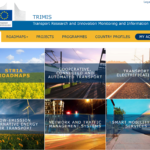
The Transport Research and Innovation Monitoring and Information System – TRIMIS is an online platform for researchers to share and discuss innovation in mobility in Europe. It is an evolution of the Transport Research & Innovation Portal (TRIP), and incorporates TRIP’s database of over 10,000 EU and national transport research projects. TRIMIS monitors the implementation and effectiveness of the roadmaps developed by the Strategic Transport Research and Innovation Agenda (STRIA). TRIMIS analyses technology trends, research and innovation capacities and developments in the European transport sector, providing open-access information. ![]()

The International Road Federation (IRF) organised the IRF Global Road Conference on 7-9 November 2018, in Las Vegas, USA. The theme of the Conference was “Building the Transport Infrastructure of Tomorrow“. The IRF Global Road Conference was the new international meeting point where leading industry innovators, researchers, and stakeholders acquire essential engineering & business insights, and help build tomorrow’s transportation infrastructure today. ![]()

A Diploma Thesis titled “Analysis of the impact of nighttime driving to young drivers’ behavior and safety in rural roads with the use of driving simulator” was presented by Eleftheria Kyriakouli in November 2017 aiming to analyze the impact of nighttime driving on driver behavior and safety in rural areas through a driving simulator experiment. Regression models were developed to analyze the impact of driving at night on the mean speed, on the mean headway distance of the vehicle and the mean reaction time and on the probability of causing an accident. The models’ application demonstrated that nighttime driving leads to small decrease of the mean speed and increase of the mean headway distance of the vehicle, which however cannot outweigh the increase of the mean reaction time in case of an accident and therefore resulting to an increase of accident probability. ![]()
![]()

Global NCAP and AA South Africa launched #SaferCarsforAfrica on 22 November 2017 in Cape Town, with the first independent crash test assessment of some of South Africa’s most popular compact and small cars. The crashworthiness results of the five cars tested showed a wide range of safety performance, from four to zero stars for adult protection, with the lowest ratings resulting in a high probability of life threatening injury in a road crash. ![]()


















































































